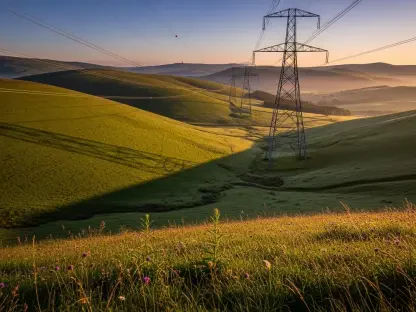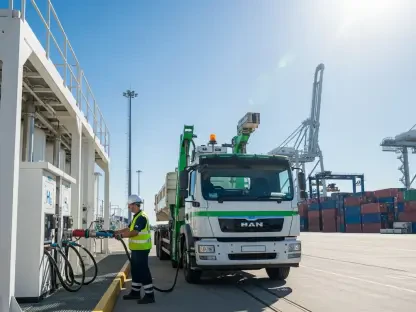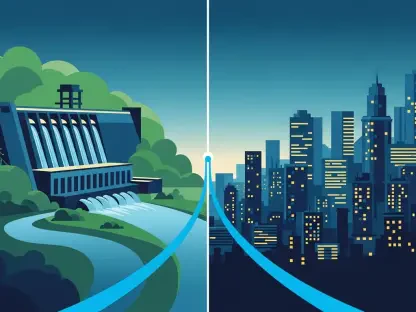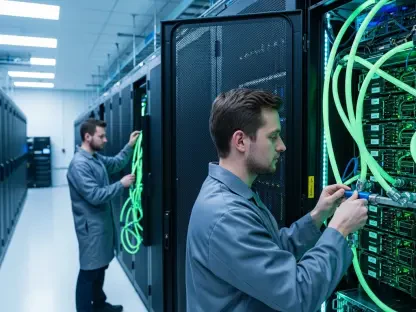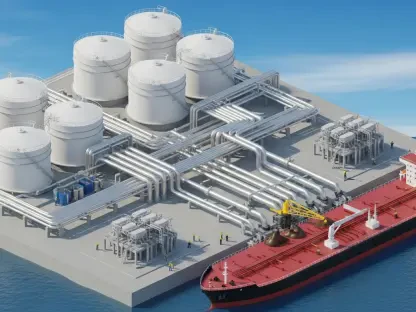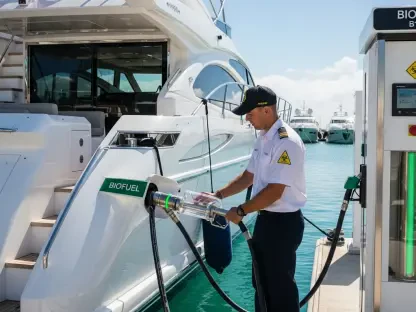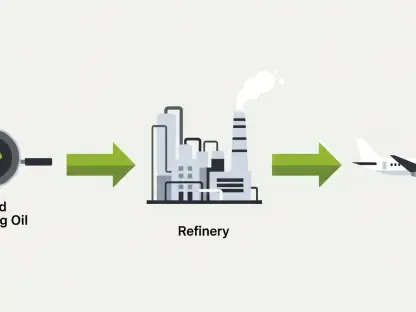The green energy sector is undergoing a rapid transformation through the adoption of various cutting-edge technologies and innovative practices. Renewable energy sources, including solar, wind, and bioenergy, are being leveraged for their sustainable and environmentally friendly attributes. Despite the inherent challenges such as intermittency and high costs, continuous advancements are set to make renewable energy more efficient and accessible. This article explores the pivotal themes and trends that are shaping the future of green energy.
Emergence of Alternative Fuels
Diverse Applications of Green Fuels
One of the most promising developments in the green energy sector is the production of alternative fuels derived from renewable sources. These green fuels, such as hydrogen, methane, ammonia, and ethanol, offer versatile applications across various industries, including transportation, heating, and industrial processes. Countries around the globe are ramping up their production capacities to not only meet domestic demand but also to export these sustainable fuels. Sri Lanka, in particular, has considerable potential in this area, which could significantly boost both its economy and its renewable energy agenda.
The push for green fuels is largely driven by the need to reduce the carbon footprint associated with traditional fossil fuels. Hydrogen, for instance, has emerged as a frontrunner due to its ability to be stored and transported efficiently, thereby offering a reliable energy source. The development of hydrogen production technologies, such as electrolysis driven by renewable energy, is transforming it into a sustainable option. As countries invest in hydrogen infrastructure, this fuel is expected to play a critical role in the global energy transition.
Hydrogen: The Fuel of the Future
Hydrogen is gaining attention as a clean fuel that can be utilized across multiple sectors, making it a key player in the future energy landscape. Its versatility allows it to be used in fuel cells for electric vehicles, industrial settings, and even in residential heating systems. Moreover, hydrogen can be produced using several methods, including the environmentally friendly electrolysis process, which uses electricity to split water into hydrogen and oxygen. When powered by renewable energy sources such as wind or solar, this method produces what is known as green hydrogen.
Countries worldwide are recognizing the potential of hydrogen and are investing heavily in its infrastructure. For example, large-scale green hydrogen projects are being developed in countries like Saudi Arabia, Australia, and Germany, aiming to establish hydrogen as a cornerstone of their renewable energy strategies. By integrating hydrogen into the energy mix, these countries can reduce their dependence on fossil fuels, lower greenhouse gas emissions, and contribute to a more sustainable energy future.
Revolutionary Solar Power Technologies
Advancements in Solar Cells
While solar power is heralded for its clean energy benefits, it often faces limitations due to weather dependencies and the extensive land area required for installations. To mitigate these issues, perovskite solar cells are emerging as a revolutionary technology. These cells offer high light absorption and conversion efficiency, are cost-effective, thinner, and more flexible than traditional silicon cells. The potential for integration with various other materials and devices, such as windows and textiles, further amplifies their utility and broadens the scope of solar power applications.
Perovskite solar cells hold the promise of transforming the solar energy landscape. These cells can be manufactured using simple printing processes, which significantly reduces production costs compared to traditional silicon-based cells. Additionally, their lightweight and flexible nature makes them ideal for a variety of applications, including building-integrated photovoltaics (BIPV) and portable solar chargers. Researchers worldwide are focusing on enhancing the stability and durability of perovskite cells to ensure their long-term viability and commercial success.
Floating Solar Farms: A Space-Saving Solution
Floating solar farms present a novel solution, particularly beneficial in regions where land is scarce. These farms utilize solar panels mounted on floating platforms over water bodies such as lakes, reservoirs, and ponds. This approach not only conserves land but also reduces water evaporation, providing a dual benefit. Sri Lanka, in collaboration with the Korean Government, is pioneering this technology with pilot projects in the Chandrika Wewa and Kiriibban Wewa reservoirs, setting a precedent for broader adoption.
The concept of floating solar farms offers several advantages beyond land conservation and water evaporation reduction. The cooling effect of water on solar panels enhances their efficiency and prolongs their lifespan. Furthermore, the installation of floating panels can reduce the growth of algae in water bodies, contributing to better water quality. As technology advances and more countries adopt floating solar solutions, the potential for generating substantial amounts of renewable energy while preserving valuable land resources becomes increasingly viable.
Innovations in Wind Power
Offshore Wind Farms
Wind power stands as another key player in renewable energy, though it confronts challenges related to variability and land use. Offshore wind farms offer a compelling solution by situating wind turbines at sea, where they can harness stronger and more consistent marine winds. These farms also avoid the visual and spatial intrusion associated with onshore installations. The World Bank’s Offshore Wind Roadmap for Sri Lanka highlights the country’s significant potential, estimated at 56 GW, urging timely investment to maximize this resource.
Offshore wind farms are gaining traction globally due to their ability to generate large amounts of energy with minimal impact on land use. The consistent and powerful winds over oceans make offshore turbines more reliable and efficient compared to their onshore counterparts. Countries with extensive coastlines, such as the United Kingdom, Denmark, and China, are leading the charge in offshore wind development, investing billions in infrastructure and research to harness this abundant renewable resource.
Vertical-Axis and Bladeless Turbines
The evolution of wind turbine designs is also noteworthy. Vertical-axis wind turbines can capture wind from any direction and perform well at lower speeds, making them suitable for urban environments. Some cities in China and Japan have implemented mini versions along busy roads, harnessing wind energy from passing vehicles. Additionally, innovations like Vortex Bladeless’ turbines, which generate energy through oscillations rather than rotational blades, point toward future urban applications where traditional turbines are impractical.
Vertical-axis wind turbines offer significant advantages for urban and residential settings due to their compact design and ability to operate in variable wind conditions. Unlike traditional horizontal-axis turbines, which require large open spaces and consistent wind direction, vertical-axis turbines can be installed in confined spaces and capture wind from multiple directions. This makes them ideal for use in urban areas, where space is limited, and wind patterns are less predictable.
Bladeless wind turbines represent a radical departure from conventional wind energy technology. By eliminating the rotating blades, these turbines reduce noise, minimize maintenance requirements, and enhance safety for birds and other wildlife. The Vortex Bladeless turbine uses an elastic rod that oscillates within a specific wind speed range, generating energy through the resulting vibrations. This innovative approach opens up new possibilities for integrating wind energy into densely populated areas where traditional turbines are not feasible.
Role of Big Data and AI
AI-Driven Grid Management
In the increasingly complex landscape of renewable energy, big data and artificial intelligence (AI) are proving indispensable. AI facilitates real-time energy grid management by enhancing power consumption forecasting, predictive maintenance, and grid analytics. Utilities are leveraging machine learning algorithms to analyze historical consumption patterns and carbon dioxide emissions, optimizing load balancing and resource allocation. This technology ensures a more reliable and efficient energy supply, reducing the sector’s overall carbon footprint.
AI-driven grid management systems integrate data from various sources, including weather forecasts, energy consumption patterns, and renewable energy production levels. By analyzing this data, AI can predict fluctuations in energy supply and demand, allowing grid operators to make informed decisions about energy distribution. This ensures that renewable energy sources are utilized efficiently and effectively, minimizing waste and maximizing the overall stability of the energy grid.
Predictive Maintenance and Hybrid Systems
Predictive maintenance powered by AI is significantly improving the longevity and performance of renewable energy infrastructure. By analyzing operational data, AI systems can predict when components are likely to fail and schedule maintenance proactively, thereby reducing downtime and associated costs. Hybrid systems that combine various renewable technologies are also being optimized through AI, ensuring a more balanced and effective energy generation matrix.
Predictive maintenance techniques use advanced machine learning algorithms to identify patterns and anomalies in the performance of renewable energy systems. By continuously monitoring equipment and analyzing data in real time, AI can detect potential issues before they escalate into major problems. This proactive approach not only extends the lifespan of renewable energy assets but also enhances their overall efficiency and reliability.
Hybrid renewable energy systems, which integrate multiple energy sources such as solar, wind, and battery storage, benefit significantly from AI optimization. AI algorithms can dynamically adjust the operation of each component based on real-time data, ensuring that the most efficient and cost-effective energy sources are utilized. This results in a more resilient and adaptable energy system, capable of maintaining a steady energy supply even in the face of fluctuating environmental conditions.
Breakthroughs in Energy Storage
Distributed Energy Storage Systems (DESS)
Energy storage has emerged as a critical frontier in the quest to stabilize renewable energy supply. Distributed Energy Storage Systems (DESS) are becoming increasingly popular, allowing localized generation and storage of renewable energy. This approach mitigates the irregularities in renewable energy production, providing a steadier and more reliable supply. Depending on economic and practical considerations, a variety of battery and battery-less storage solutions are being developed, tailored to meet specific regional needs.
DESS enables communities and businesses to generate and store renewable energy locally, reducing their reliance on centralized power grids. This decentralized approach offers numerous benefits, including increased energy security, reduced transmission losses, and the ability to utilize renewable energy during periods of low production. Battery-based storage systems, such as lithium-ion batteries, are widely used for their high energy density and efficiency. Meanwhile, alternative storage methods, such as flywheels and compressed air energy storage (CAES), offer viable solutions for specific applications.
Innovations in Battery Technology
The rapid advancements in battery technology are playing a pivotal role in enhancing energy storage capabilities. Researchers are exploring new materials and chemistries to develop batteries with higher energy density, longer lifespan, and faster charging times. Solid-state batteries, for instance, replace the liquid electrolyte in traditional batteries with a solid electrolyte, resulting in improved safety and performance. Additionally, flow batteries, which use liquid electrolytes stored in external tanks, offer scalable and flexible storage solutions for large-scale renewable energy systems.
Innovations in energy storage are critical for addressing the intermittency challenges associated with renewable energy sources. By providing reliable backup power and smoothing out fluctuations in energy production, advanced battery systems enable a more consistent and dependable renewable energy supply. As battery technology continues to evolve, it is expected to play an increasingly vital role in the global transition to a sustainable energy future.
Conclusion
The green energy sector is experiencing a significant transformation through the integration of advanced technologies and innovative methodologies. Renewable energy sources such as solar, wind, and bioenergy are being utilized for their sustainable and eco-friendly benefits. Although there are challenges like intermittency and high initial costs, ongoing advancements aim to make renewable energy more efficient and widely available.
Solar power is increasingly popular, leveraging photovoltaic cells to convert sunlight into electricity. Wind energy, captured through turbines, is also seeing technological upgrades that enhance efficiency and storage capabilities. Bioenergy from organic materials offers another promising avenue, with ongoing research into optimizing energy conversion processes.
Moreover, energy storage solutions like batteries are evolving to address the intermittency issue, making renewable power more reliable. Policymakers and industry leaders are collaborating to create favorable regulations and incentives, further driving the sector’s growth. This article delves into these key themes and trends that are shaping the future landscape of green energy, highlighting the potential and challenges ahead.


